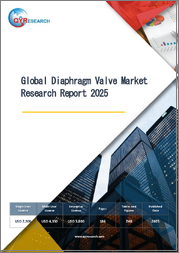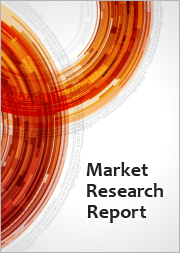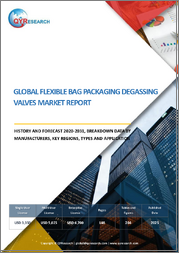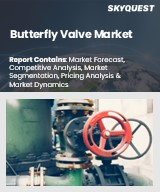
|
시장보고서
상품코드
1580986
세계의 수소 밸브 시장 : 제품 유형, 밸브 사이즈, 재질, 압력 범위, 구경 사이즈, 최종 사용자 산업별 예측(2025-2030년)Hydrogen Valve Market by Product Type (Ball Valve, Check Valve, Flow Control Valves), Valve Size (1 Inch To 6 Inches, 12 Inches And Above, 6 Inches To 12 Inches), Material, Pressure Range, Diameter Size, End-user Industry - Global Forecast 2025-2030 |
||||||
수소 밸브 시장은 2023년에 2억 9,671만 달러로 평가되었고, 2024년에는 3억 1,288만 달러에 이를 것으로 예측되며, 복합 연간 성장률(CAGR) 5.76%로 성장하여 2030년에는 4억 3,941만 달러에 이를 것으로 예상됩니다.
수소 밸브 시장은 수소 경제에서 매우 중요하며 다양한 응용 분야에서 수소 흐름을 제어하고 조정하는 데 필수적인 구성 요소로 작동합니다. 이 밸브는 수소 저장, 수송, 연료전지 차량, 산업 공정, 수소 공급 스테이션 등의 최종 용도에서 안전성, 효율성 및 신뢰성을 보장하는 데 필수적입니다. 수소 밸브의 필요성은 청정 에너지에 대한 세계의 주목이 증가하고 있기 때문입니다. 정부 정책과 녹색기술 투자로 주요 에너지 캐리어로서 수소 채용이 증가하고 있기 때문에 시장이 크게 성장할 전망입니다. 성장에 영향을 미치는 주요 개발 요인으로는 수소 저장에 전형적인 고압, 저온에 견디는 밸브 기술의 진보와 수소 제조, 유통을 위한 인프라 정비의 진전을 들 수 있습니다. 새로운 비즈니스 기회는 특히 수소 연료전지 차량과 같은 운송 부문과 정제 및 암모니아 제조에 수소가 사용되는 산업 부문에 있습니다. 그러나 시장 확대는 수소 제조 및 인프라와 관련된 높은 비용, 수소 취화를 방지하는 데 사용되는 재료에 대한 기술적 어려움, 안전 기준을 관리하는 엄격한 규제 등의 과제에 직면하고 있습니다. 내수소 합금과 실시간 모니터링 기능을 갖춘 스마트 밸브 기술 개발 등 재료 과학의 혁신은 연구 개발의 유망한 부문입니다. 시장은 경쟁 역학을 특징으로 하며, 진출기업은 전략적 제휴, 인수, 기술적 진보에 중점을 두어 시장에서의 지위를 강화하고 있습니다. 기업의 경우 R&D 투자를 선호함으로써 지속 가능한 에너지 부문의 새로운 수요에 대응하는 제품을 제공할 수 있게 되어 급속히 진화하는 이 시장에서 확고한 존재감을 나타낼 수 있습니다.
| 주요 시장 통계 | |
|---|---|
| 기준년 (2023년) | 2억 9,671만 달러 |
| 예측년(2024년) | 3억 1,288만 달러 |
| 예측년(2030년) | 4억 3,941만 달러 |
| 복합 연간 성장률(CAGR)(%) | 5.76% |
시장 역학 : 급속히 진화하는 수소 밸브 시장의 주요 시장 인사이트 공개
수소 밸브 시장은 수요 및 공급의 역동적인 상호 작용에 의해 변모하고 있습니다. 이러한 시장 역학의 진화를 이해함으로써 기업은 충분한 정보를 바탕으로 투자결정, 전략적 결정 정밀화, 새로운 비즈니스 기회 획득에 대비할 수 있습니다. 이러한 동향을 종합적으로 파악함으로써 기업은 정치적, 지리적, 기술적, 사회적, 경제적 영역에 걸친 다양한 리스크를 경감할 수 있을 뿐만 아니라, 소비자 행동과 그것이 제조 비용 또는 구매 동향에 미치는 영향을보다 명확하게 이해할 수 있습니다.
- 시장 성장 촉진요인
- 수소연료전지자동차에 대한 투자 증가
- 깨끗하고 지속 가능한 에너지원으로 다양한 산업에서 수소 채용이 증가
- 수소 제조, 저장, 유통 인프라를 촉진하는 정부의 정책과 인센티브
- 시장 성장 억제요인
- 인화성이 높고 분자 크기가 작은 수소의 기술적, 안전적 문제에의 대응
- 시장 기회
- 수소 밸브의 성능 향상과 안전성을 촉진하는 기술의 진보
- 산업 부문 전체에서 수소 밸브의 채용을 촉진하는 혁신적인 규제 개발
- 시장의 과제
- 재료의 호환성과 내구성에 관련된 리스크의 경감
Porter's Five Forces : 수소 밸브 시장을 탐색하는 전략 도구
Porter's Five Forces Framework는 시장 상황 및 경쟁 구도를 이해하는 중요한 도구입니다. Porter's Five Forces Framework는 기업의 경쟁을 평가하고 전략적 기회를 탐구하는 명확한 기술을 설명합니다. 이 프레임워크 기업이 시장 내 세력도를 평가하고 신규 사업의 수익성을 결정하는 데 도움이 됩니다. 이러한 인사이트을 통해 기업은 자사의 강점을 활용하고 약점을 해결하고 잠재적인 과제를 피할 수 있으며 보다 강인한 시장에서의 포지셔닝을 확보할 수 있습니다.
PESTLE 분석 : 수소 밸브 시장에서 외부로부터의 영향 파악
외부 거시 환경 요인은 수소 밸브 시장의 성과 역학을 형성하는데 매우 중요한 역할을 합니다. 정치적, 경제적, 사회적, 기술적, 법적, 환경적 요인 분석은 이러한 영향을 탐색하는 데 필요한 정보를 설명합니다. PESTLE 요인을 조사함으로써 기업은 잠재적인 위험과 기회를 더 잘 이해할 수 있습니다. 이 분석을 통해 기업은 규제, 소비자 선호, 경제 동향의 변화를 예측하고 앞으로 예상되는 적극적인 의사 결정을 할 준비를 할 수 있습니다.
시장 점유율 분석 : : 수소 밸브 시장 경쟁 구도 파악
수소 밸브 시장의 상세한 시장 점유율 분석을 통해 공급업체의 성과를 종합적으로 평가할 수 있습니다. 기업은 수익, 고객 기반, 성장률 등 주요 지표를 비교하여 경쟁 포지셔닝을 밝힐 수 있습니다. 이 분석을 통해 시장 집중, 세분화 및 통합 동향을 밝혀내고 공급업체는 경쟁이 치열해지면서 자신의 지위를 높이는 전략적 의사 결정을 내리는 데 필요한 지식을 얻을 수 있습니다.
FPNV 포지셔닝 매트릭스 수소 밸브 시장에서 공급업체의 성능 평가
FPNV 포지셔닝 매트릭스는 수소 밸브 시장에서 공급업체를 평가하는 중요한 도구입니다. 이 행렬을 통해 비즈니스 조직은 공급업체의 비즈니스 전략과 제품 만족도를 기준으로 평가하여 목표에 맞는 충분한 정보를 바탕으로 의사 결정을 내릴 수 있습니다. 네 가지 사분면을 통해 공급업체를 명확하고 정확하게 세분화하여 전략 목표에 가장 적합한 파트너 및 솔루션을 파악할 수 있습니다.
전략 분석 및 추천: 수소 밸브 시장에서 성공을 위한 길을 그리기
수소 밸브 시장의 전략 분석은 시장에서의 존재를 강화하려는 기업에게 필수적입니다. 주요 자원, 능력 및 성과 지표를 검토함으로써 기업은 성장 기회를 파악하고 개선을 위해 노력할 수 있습니다. 이 접근법을 통해 경쟁 구도에서 과제를 극복하고 새로운 비즈니스 기회를 활용하여 장기적인 성공을 거둘 수 있는 체제를 마련할 수 있습니다.
이 보고서는 주요 관심 분야를 다루는 시장에 대한 종합적인 분석을 제공합니다.
1. 시장 침투 : 현재 시장 환경의 상세한 검토, 주요 기업의 광범위한 데이터, 시장 도달범위 및 전반적인 영향력 평가.
2. 시장 개척도 : 신흥 시장의 성장 기회를 파악하고, 기존 부문에서의 확장 가능성을 평가하며, 미래 성장을 위한 전략적 로드맵을 설명합니다.
3. 시장 다양화 : 최근 제품 출시, 미개척 지역, 업계의 주요 진보, 시장을 형성하는 전략적 투자를 분석합니다.
4. 경쟁 평가 및 정보 : 경쟁 구도를 철저히 분석하여 시장 점유율, 사업 전략, 제품 포트폴리오, 인증, 규제 당국 승인, 특허 동향, 주요 기업의 기술 진보 등을 검증합니다.
5. 제품 개발 및 혁신 : 미래 시장 성장을 가속할 것으로 예상되는 최첨단 기술, R&D 활동, 제품 혁신을 강조합니다.
또한 이해관계자가 충분한 정보를 얻은 후 의사결정할 수 있도록 중요한 질문에도 대답하고 있습니다.
1. 현재 시장 규모와 향후 성장 예측은?
2. 최고의 투자 기회를 제공하는 제품, 지역은 어디입니까?
3. 시장을 형성하는 주요 기술 동향과 규제의 영향은?
4. 주요 벤더의 시장 점유율과 경쟁 포지션은?
5. 벤더 시장 진입, 철수 전략의 원동력이 되는 수익원과 전략적 기회는 무엇인가?
목차
제1장 서문
제2장 조사 방법
제3장 주요 요약
제4장 시장 개요
제5장 시장 인사이트
- 시장 역학
- 성장 촉진요인
- 수소연료전지차에 대한 투자 증가
- 깨끗하고 지속 가능한 에너지원으로 다양한 산업에서 수소 도입이 확대
- 수소 생산, 저장, 유통 인프라를 촉진하는 정부의 정책과 인센티브
- 억제요인
- 수소의 가연성이나 분자 사이즈가 작은 것에 관련된 기술과 안전성의 문제에 대처
- 기회
- 수소 밸브의 성능과 안전 기능의 향상을 촉진하는 기술의 진보
- 산업 부문 전체에서 수소 밸브의 채용을 촉진하는 혁신적인 규제의 발전
- 과제
- 재료의 적합성과 내구성에 관련된 리스크의 경감
- 성장 촉진요인
- 시장 세분화 분석
- 제품 유형 : 수소 연료전지, 저장 탱크, 분석 장비에서 바늘 밸브의 새로운 용도
- 최종사용자 산업 : 자동차 산업 수요 증가에 의해 수소 밸브가 사용되게 되었습니다
- Porter's Five Forces 분석
- PESTEL 분석
- 정치
- 경제
- 사회
- 기술
- 법률
- 환경
제6장 수소 밸브 시장 : 제품 유형별
- 소개
- 볼 밸브
- 체크 밸브
- 유량 제어 밸브
- 니들 밸브
- 압력 릴리프 밸브
- 폐쇄 밸브
제7장 수소 밸브 시장 : 밸브 사이즈별
- 소개
- 1-6인치
- 12인치 이상
- 6-12인치
- 1인치 이하
제8장 수소밸브 시장 : 재료별
- 소개
- 황동
- 청동
- 구리
- 플라스틱/폴리머
- 스테인레스 스틸
제9장 수소 밸브 시장 : 압력 범위별
- 소개
- 고압(1,000 PSI 이상)
- 저압(300 PSI 이하)
- 중압(300-1,000 PSI)
제10장 수소 밸브 시장 : 구경 사이즈별
- 소개
- 1-5인치
- 5-10인치
- 1인치 이하
- 10인치 이상
제11장 수소 밸브 시장 : 최종 사용자 산업별
- 소개
- 항공우주
- 자동차
- 화학약품
- 건설
- 에너지 및 전력
- 음식
- 의료
- 해양
- 석유 및 가스
제12장 아메리카의 수소 밸브 시장
- 소개
- 아르헨티나
- 브라질
- 캐나다
- 멕시코
- 미국
제13장 아시아태평양의 수소 밸브 시장
- 소개
- 호주
- 중국
- 인도
- 인도네시아
- 일본
- 말레이시아
- 필리핀
- 싱가포르
- 한국
- 대만
- 태국
- 베트남
제14장 유럽, 중동 및 아프리카의 수소 밸브 시장
- 소개
- 덴마크
- 이집트
- 핀란드
- 프랑스
- 독일
- 이스라엘
- 이탈리아
- 네덜란드
- 나이지리아
- 노르웨이
- 폴란드
- 카타르
- 러시아
- 사우디아라비아
- 남아프리카
- 스페인
- 스웨덴
- 스위스
- 터키
- 아랍에미리트(UAE)
- 영국
제15장 경쟁 구도
- 시장 점유율 분석(2023년)
- FPNV 포지셔닝 매트릭스(2023년)
- 경쟁 시나리오 분석
- OPW Clean Energy Solutions는 인프라 확대 및 규제 준수에 따른 수소 시장 수요에 부응하기 위해 6인치와 8인치 모델을 출시
- AMPO는 GRZ Technologies와 제휴하여 그린 수소 솔루션의 배송과 통합을 통해 스페인과 포르투갈의 에너지 그리드의 신뢰성을 향상
- Flowserve Corporation은 우스터 크라이오제닉 시리즈의 1/4 회전 플로팅 볼 밸브를 발매
- 전략 분석과 제안
기업 목록
- AT Controls Inc.
- Aalberts NV
- Advance Valves Global
- Armstrong International
- Bray International Inc.
- Chemline Plastics
- Cla-Val Company
- Conval Inc.
- CRANE ChemPharma & Energy Corp.
- Emerson Electric Co.
- Forbes Marshall
- GF Piping Systems
- Graco Inc.
- Hayward Flow Control
- ITT Inc.
- KITZ Corporation
- Leser GmbH & Co. KG
- Metraflex Company
- Neles Corporation
- Red-White Valve Corp.
- Valmet
- Westport Fuel Systems Inc.
The Hydrogen Valve Market was valued at USD 296.71 million in 2023, expected to reach USD 312.88 million in 2024, and is projected to grow at a CAGR of 5.76%, to USD 439.41 million by 2030.
The hydrogen valve market is critical within the hydrogen economy, serving as essential components in controlling and regulating hydrogen flow across various applications. These valves are vital for ensuring safety, efficiency, and reliability in hydrogen storage, transportation, and end-use applications, such as fuel cell vehicles, industrial processes, and hydrogen refueling stations. The necessity for hydrogen valves stems from the increasing global focus on clean energy alternatives, as hydrogen is seen as a pivotal element in reducing carbon emissions and achieving sustainability goals. The market is poised for substantial growth due to the rising adoption of hydrogen as a key energy carrier, accelerated by government policies and investments in green technologies. Key influencing growth factors include advancements in valve technologies to withstand the high pressure and low temperatures typical of hydrogen storage, as well as the growing infrastructure development for hydrogen production and distribution. Emerging opportunities lie in the transportation sector, particularly in hydrogen fuel cell vehicles, and the industrial sector, where hydrogen is used in refining and ammonia production. However, market expansion faces challenges such as high costs associated with hydrogen production and infrastructure, technical difficulties related to the materials used to prevent hydrogen embrittlement, and stringent regulations governing safety standards. Innovations in material science, such as developing hydrogen-resistant alloys and smart valve technologies with real-time monitoring capabilities, are promising areas for research and development. The market is characterized by competitive dynamics with players focusing on strategic collaborations, acquisitions, and technological advancements to strengthen their market position. For businesses, prioritizing investments in R&D can lead to advancements in product offerings, catering to emerging demand within the sustainable energy sector, and establishing a strong market presence in this rapidly evolving landscape.
| KEY MARKET STATISTICS | |
|---|---|
| Base Year [2023] | USD 296.71 million |
| Estimated Year [2024] | USD 312.88 million |
| Forecast Year [2030] | USD 439.41 million |
| CAGR (%) | 5.76% |
Market Dynamics: Unveiling Key Market Insights in the Rapidly Evolving Hydrogen Valve Market
The Hydrogen Valve Market is undergoing transformative changes driven by a dynamic interplay of supply and demand factors. Understanding these evolving market dynamics prepares business organizations to make informed investment decisions, refine strategic decisions, and seize new opportunities. By gaining a comprehensive view of these trends, business organizations can mitigate various risks across political, geographic, technical, social, and economic domains while also gaining a clearer understanding of consumer behavior and its impact on manufacturing costs and purchasing trends.
- Market Drivers
- Growing investments in hydrogen fuel cell vehicles
- Increasing adoption of hydrogen as a clean and sustainable energy source across various industries
- Government policies and incentives promoting hydrogen production, storage, and distribution infrastructure
- Market Restraints
- Handling hydrogen technical and safety issues related to highly flammable nature and small molecular size
- Market Opportunities
- Technological advancements facilitating enhanced performance and safety features in hydrogen valves
- Innovative regulatory developments promoting the adoption of hydrogen valves across industrial sectors
- Market Challenges
- Mitigating risks associated with material compatibility and durability
Porter's Five Forces: A Strategic Tool for Navigating the Hydrogen Valve Market
Porter's five forces framework is a critical tool for understanding the competitive landscape of the Hydrogen Valve Market. It offers business organizations with a clear methodology for evaluating their competitive positioning and exploring strategic opportunities. This framework helps businesses assess the power dynamics within the market and determine the profitability of new ventures. With these insights, business organizations can leverage their strengths, address weaknesses, and avoid potential challenges, ensuring a more resilient market positioning.
PESTLE Analysis: Navigating External Influences in the Hydrogen Valve Market
External macro-environmental factors play a pivotal role in shaping the performance dynamics of the Hydrogen Valve Market. Political, Economic, Social, Technological, Legal, and Environmental factors analysis provides the necessary information to navigate these influences. By examining PESTLE factors, businesses can better understand potential risks and opportunities. This analysis enables business organizations to anticipate changes in regulations, consumer preferences, and economic trends, ensuring they are prepared to make proactive, forward-thinking decisions.
Market Share Analysis: Understanding the Competitive Landscape in the Hydrogen Valve Market
A detailed market share analysis in the Hydrogen Valve Market provides a comprehensive assessment of vendors' performance. Companies can identify their competitive positioning by comparing key metrics, including revenue, customer base, and growth rates. This analysis highlights market concentration, fragmentation, and trends in consolidation, offering vendors the insights required to make strategic decisions that enhance their position in an increasingly competitive landscape.
FPNV Positioning Matrix: Evaluating Vendors' Performance in the Hydrogen Valve Market
The Forefront, Pathfinder, Niche, Vital (FPNV) Positioning Matrix is a critical tool for evaluating vendors within the Hydrogen Valve Market. This matrix enables business organizations to make well-informed decisions that align with their goals by assessing vendors based on their business strategy and product satisfaction. The four quadrants provide a clear and precise segmentation of vendors, helping users identify the right partners and solutions that best fit their strategic objectives.
Strategy Analysis & Recommendation: Charting a Path to Success in the Hydrogen Valve Market
A strategic analysis of the Hydrogen Valve Market is essential for businesses looking to strengthen their global market presence. By reviewing key resources, capabilities, and performance indicators, business organizations can identify growth opportunities and work toward improvement. This approach helps businesses navigate challenges in the competitive landscape and ensures they are well-positioned to capitalize on newer opportunities and drive long-term success.
Key Company Profiles
The report delves into recent significant developments in the Hydrogen Valve Market, highlighting leading vendors and their innovative profiles. These include A.T. Controls Inc., Aalberts N.V., Advance Valves Global, Armstrong International, Bray International Inc., Chemline Plastics, Cla-Val Company, Conval Inc., CRANE ChemPharma & Energy Corp., Emerson Electric Co., Forbes Marshall, GF Piping Systems, Graco Inc., Hayward Flow Control, ITT Inc., KITZ Corporation, Leser GmbH & Co. KG, Metraflex Company, Neles Corporation, Red-White Valve Corp., Valmet, and Westport Fuel Systems Inc..
Market Segmentation & Coverage
This research report categorizes the Hydrogen Valve Market to forecast the revenues and analyze trends in each of the following sub-markets:
- Based on Product Type, market is studied across Ball Valve, Check Valve, Flow Control Valves, Needle Valve, Pressure Relief Valve, and Shut-off Valves.
- Based on Valve Size, market is studied across 1 Inch To 6 Inches, 12 Inches And Above, 6 Inches To 12 Inches, and Up To 1 Inch.
- Based on Material, market is studied across Brass, Bronze, Copper, Plastic/Polymer, and Stainless Steel.
- Based on Pressure Range, market is studied across High Pressure (> 1000 PSI), Low Pressure (< 300 PSI), and Medium Pressure (300-1000 PSI).
- Based on Diameter Size, market is studied across 1 to 5 inches, 5 to 10 inches, Less Than 1 inch, and More than 10 inches.
- Based on End-user Industry, market is studied across Aerospace, Automotive, Chemicals, Construction, Energy & Power, Food & Beverage, Healthcare, Marine, and Oil & Gas.
- Based on Region, market is studied across Americas, Asia-Pacific, and Europe, Middle East & Africa. The Americas is further studied across Argentina, Brazil, Canada, Mexico, and United States. The United States is further studied across California, Florida, Illinois, New York, Ohio, Pennsylvania, and Texas. The Asia-Pacific is further studied across Australia, China, India, Indonesia, Japan, Malaysia, Philippines, Singapore, South Korea, Taiwan, Thailand, and Vietnam. The Europe, Middle East & Africa is further studied across Denmark, Egypt, Finland, France, Germany, Israel, Italy, Netherlands, Nigeria, Norway, Poland, Qatar, Russia, Saudi Arabia, South Africa, Spain, Sweden, Switzerland, Turkey, United Arab Emirates, and United Kingdom.
The report offers a comprehensive analysis of the market, covering key focus areas:
1. Market Penetration: A detailed review of the current market environment, including extensive data from top industry players, evaluating their market reach and overall influence.
2. Market Development: Identifies growth opportunities in emerging markets and assesses expansion potential in established sectors, providing a strategic roadmap for future growth.
3. Market Diversification: Analyzes recent product launches, untapped geographic regions, major industry advancements, and strategic investments reshaping the market.
4. Competitive Assessment & Intelligence: Provides a thorough analysis of the competitive landscape, examining market share, business strategies, product portfolios, certifications, regulatory approvals, patent trends, and technological advancements of key players.
5. Product Development & Innovation: Highlights cutting-edge technologies, R&D activities, and product innovations expected to drive future market growth.
The report also answers critical questions to aid stakeholders in making informed decisions:
1. What is the current market size, and what is the forecasted growth?
2. Which products, segments, and regions offer the best investment opportunities?
3. What are the key technology trends and regulatory influences shaping the market?
4. How do leading vendors rank in terms of market share and competitive positioning?
5. What revenue sources and strategic opportunities drive vendors' market entry or exit strategies?
Table of Contents
1. Preface
- 1.1. Objectives of the Study
- 1.2. Market Segmentation & Coverage
- 1.3. Years Considered for the Study
- 1.4. Currency & Pricing
- 1.5. Language
- 1.6. Stakeholders
2. Research Methodology
- 2.1. Define: Research Objective
- 2.2. Determine: Research Design
- 2.3. Prepare: Research Instrument
- 2.4. Collect: Data Source
- 2.5. Analyze: Data Interpretation
- 2.6. Formulate: Data Verification
- 2.7. Publish: Research Report
- 2.8. Repeat: Report Update
3. Executive Summary
4. Market Overview
5. Market Insights
- 5.1. Market Dynamics
- 5.1.1. Drivers
- 5.1.1.1. Growing investments in hydrogen fuel cell vehicles
- 5.1.1.2. Increasing adoption of hydrogen as a clean and sustainable energy source across various industries
- 5.1.1.3. Government policies and incentives promoting hydrogen production, storage, and distribution infrastructure
- 5.1.2. Restraints
- 5.1.2.1. Handling hydrogen technical and safety issues related to highly flammable nature and small molecular size
- 5.1.3. Opportunities
- 5.1.3.1. Technological advancements facilitating enhanced performance and safety features in hydrogen valves
- 5.1.3.2. Innovative regulatory developments promoting the adoption of hydrogen valves across industrial sectors
- 5.1.4. Challenges
- 5.1.4.1. Mitigating risks associated with material compatibility and durability
- 5.1.1. Drivers
- 5.2. Market Segmentation Analysis
- 5.2.1. Product: Emerging use of needle valves in hydrogen fuel cells, storage tanks, and analytical instrumentation
- 5.2.2. End-user Industry: Rising demand for the automotive industry resulting in the use of hydrogen valves
- 5.3. Porter's Five Forces Analysis
- 5.3.1. Threat of New Entrants
- 5.3.2. Threat of Substitutes
- 5.3.3. Bargaining Power of Customers
- 5.3.4. Bargaining Power of Suppliers
- 5.3.5. Industry Rivalry
- 5.4. PESTLE Analysis
- 5.4.1. Political
- 5.4.2. Economic
- 5.4.3. Social
- 5.4.4. Technological
- 5.4.5. Legal
- 5.4.6. Environmental
6. Hydrogen Valve Market, by Product Type
- 6.1. Introduction
- 6.2. Ball Valve
- 6.3. Check Valve
- 6.4. Flow Control Valves
- 6.5. Needle Valve
- 6.6. Pressure Relief Valve
- 6.7. Shut-off Valves
7. Hydrogen Valve Market, by Valve Size
- 7.1. Introduction
- 7.2. 1 Inch To 6 Inches
- 7.3. 12 Inches And Above
- 7.4. 6 Inches To 12 Inches
- 7.5. Up To 1 Inch
8. Hydrogen Valve Market, by Material
- 8.1. Introduction
- 8.2. Brass
- 8.3. Bronze
- 8.4. Copper
- 8.5. Plastic/Polymer
- 8.6. Stainless Steel
9. Hydrogen Valve Market, by Pressure Range
- 9.1. Introduction
- 9.2. High Pressure (> 1000 PSI)
- 9.3. Low Pressure (< 300 PSI)
- 9.4. Medium Pressure (300-1000 PSI)
10. Hydrogen Valve Market, by Diameter Size
- 10.1. Introduction
- 10.2. 1 to 5 inches
- 10.3. 5 to 10 inches
- 10.4. Less Than 1 inch
- 10.5. More than 10 inches
11. Hydrogen Valve Market, by End-user Industry
- 11.1. Introduction
- 11.2. Aerospace
- 11.3. Automotive
- 11.4. Chemicals
- 11.5. Construction
- 11.6. Energy & Power
- 11.7. Food & Beverage
- 11.8. Healthcare
- 11.9. Marine
- 11.10. Oil & Gas
12. Americas Hydrogen Valve Market
- 12.1. Introduction
- 12.2. Argentina
- 12.3. Brazil
- 12.4. Canada
- 12.5. Mexico
- 12.6. United States
13. Asia-Pacific Hydrogen Valve Market
- 13.1. Introduction
- 13.2. Australia
- 13.3. China
- 13.4. India
- 13.5. Indonesia
- 13.6. Japan
- 13.7. Malaysia
- 13.8. Philippines
- 13.9. Singapore
- 13.10. South Korea
- 13.11. Taiwan
- 13.12. Thailand
- 13.13. Vietnam
14. Europe, Middle East & Africa Hydrogen Valve Market
- 14.1. Introduction
- 14.2. Denmark
- 14.3. Egypt
- 14.4. Finland
- 14.5. France
- 14.6. Germany
- 14.7. Israel
- 14.8. Italy
- 14.9. Netherlands
- 14.10. Nigeria
- 14.11. Norway
- 14.12. Poland
- 14.13. Qatar
- 14.14. Russia
- 14.15. Saudi Arabia
- 14.16. South Africa
- 14.17. Spain
- 14.18. Sweden
- 14.19. Switzerland
- 14.20. Turkey
- 14.21. United Arab Emirates
- 14.22. United Kingdom
15. Competitive Landscape
- 15.1. Market Share Analysis, 2023
- 15.2. FPNV Positioning Matrix, 2023
- 15.3. Competitive Scenario Analysis
- 15.3.1. OPW Clean Energy Solutions launched 6 and 8-inch models to meet hydrogen market demand driven by infrastructure expansion and regulatory compliance
- 15.3.2. AMPO partnered with GRZ Technologies to distribute and integrate green hydrogen solutions, enhancing energy grid reliability in Spain and Portugal
- 15.3.3. Flowserve Corporation launched the Worcester Cryogenic series of quarter-turn floating ball valves
- 15.4. Strategy Analysis & Recommendation
Companies Mentioned
- 1. A.T. Controls Inc.
- 2. Aalberts N.V.
- 3. Advance Valves Global
- 4. Armstrong International
- 5. Bray International Inc.
- 6. Chemline Plastics
- 7. Cla-Val Company
- 8. Conval Inc.
- 9. CRANE ChemPharma & Energy Corp.
- 10. Emerson Electric Co.
- 11. Forbes Marshall
- 12. GF Piping Systems
- 13. Graco Inc.
- 14. Hayward Flow Control
- 15. ITT Inc.
- 16. KITZ Corporation
- 17. Leser GmbH & Co. KG
- 18. Metraflex Company
- 19. Neles Corporation
- 20. Red-White Valve Corp.
- 21. Valmet
- 22. Westport Fuel Systems Inc.



















